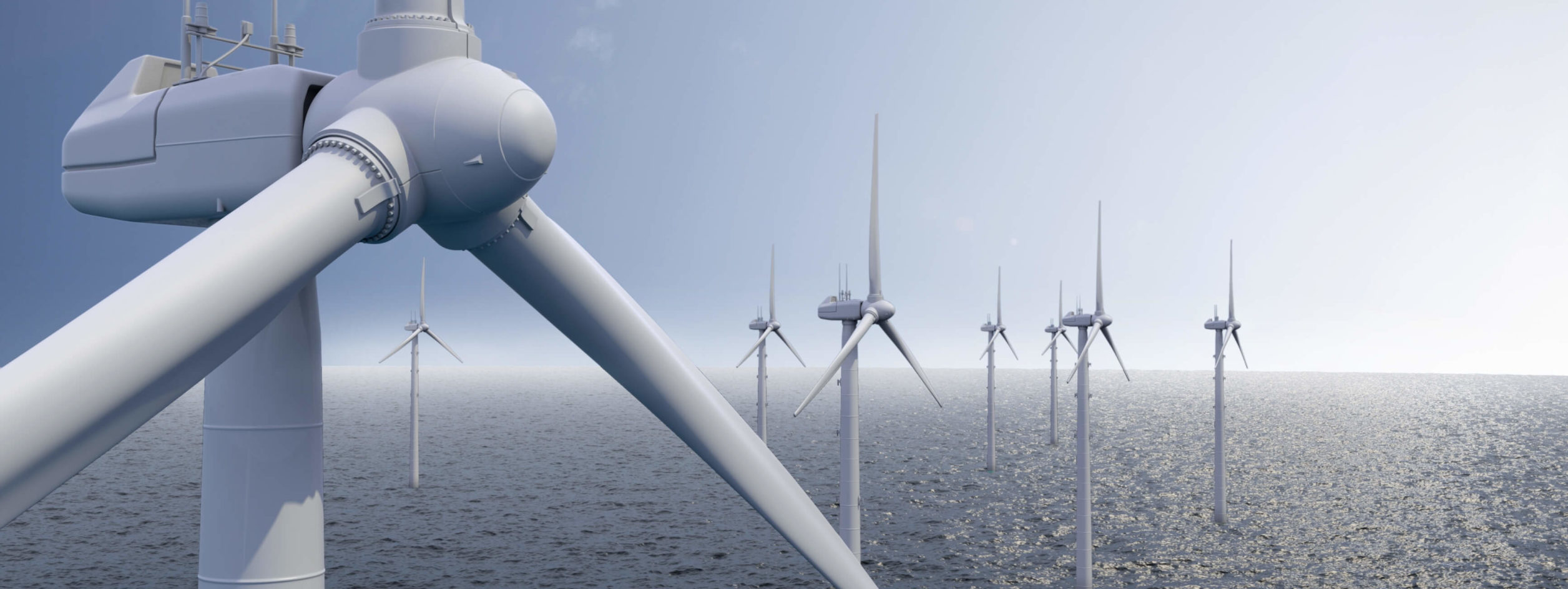The Future of Data Management and Digitalisation of Offshore Wind
7 December 2021 — John Draper

As offshore wind moves up several gears to become one of the biggest players in the energy arena, now is the time to try and embed some key learnings from other parts of the energy industry that could help to significantly reduce the LCOE (Levelised Cost of Energy).
Data is now the life blood of most, if not all, organisations and going forward there is going to be an order of magnitude increase in the amount of data available to any offshore wind operator. The challenge is to receive it efficiently and place it in your data platform where it can easily be found.
The Digitalisation Challenge
In an ideal world, all data would be received and stored in the same way, but this is not the reality. Data often comes in different formats with varying data standards, and this is a real challenge for operators and service providers. This scenario can result in project delays and lost days with the receiving operator team having to devote a significant amount of time converting data into the required format and storing it in the system of record.
At the other end, when the task of data analysis is required to inform critical decisions, the data often cannot be found. Based on our clients’ experience it can take 40% of an engineer’s time to find the right data. Then there is the question of whether the data is correct and in the right format. The upshot of this, is that time spent on the higher value activity of analysis is vastly reduced from what it could be, and the quality of the analysis is often compromised.
The time impact of inefficient data management is likely to be a common challenge for offshore wind operators, with increased data access and new technologies to learn and integrate.
Mitigating Issues with Data
In the past, operators invested in several individual software applications, each with its own data structure, storage and referencing. However, when it came to analysing a problem, it was often a struggle to know where to go for the data, which was often across multiple applications. Sometimes the same data was in both applications, so which is right? The values can be different. There needs to be alignment across the applications so you can be sure you are looking at the right data for the same object. Often the reference keys used are not properly aligned either missing digits or entered in different ways.
Some operators tried to solve these issues by using integration software to align the data between the various applications. This can help users by entering the data once and then that data is copied to all relevant applications. However, it rarely captures all the data, so users often need to go into each system and enter the extra data manually. At least if it has worked then the same reference data is aligned across all systems. However, trying to align the existing data can be a huge task, and many organisations leave that to be resolved later, hence leaving silos of unconnected data which are never aligned.

Whilst there are workarounds to address the shortfalls of integration software, it is notoriously hard to develop as required, and a dedicated software development team is usually needed to ensure it is successful. This incurs considerable initial and ongoing costs.
To avoid the most common issues, many organisations are opting to build their own data lakes; copying data from the key applications into their lakes to allow the analysis. However, if the data is not in the right format and structure at the beginning, you still have the classic data problem of garbage in – garbage out. Data must be properly reviewed and curated before it is entered into the key systems, and all staff touching the data need to be trained in the use of the data and the consequences of their actions to maintain high quality data.
The Value of Shared Learnings Between Sectors
The offshore wind sector will undoubtedly benefit from learnings from oil and gas, ensuring that projects can be delivered more efficiently from the outset.
One notable example is the work of the OSDU (Open Subsurface Data Universe) group. Data and digitalisation challenges were first recognised in the oil and gas sector, and in early 2021 the OSDU group released an open source data platform to mitigate the most common issues.

The current open source platform is run under the auspices of the open group, which provides the structure and organisation for developing open source software, as per the relevant contributors’ needs. It covers the lifecycle of a production reservoir from initial exploration, through to production and then decommissioning. The relevant software vendors are now modifying their software so that it can access the data in the data platform, rather than their own datastore.
It is a big effort, that will require updated versions of the software to be deployed at the same time as the data is migrated into the data platform. It will be completed in stages across all technical areas. But the value is huge. No more looking for the relevant data. Now you will know exactly where it is and how it aligns to all the other data around it. It is the foundation for your end-to-end digital transformation.
It is built on all the cloud platforms (Microsoft Azure, Amazon Wed Services, Google) so you can choose which cloud you want it to sit on. It can even work on premise.
This is now being supported by most of the oil and gas operators who are deploying it, and a data platform is now being created for the offshore wind sector too. This will undoubtedly bring huge benefits and end-to-end efficiencies for offshore wind projects.
The Future of Digitalisation of Offshore Wind
For offshore wind, the OSDU group open source data platform could enable the sector to use a standard data platform that covers the life cycle of an offshore wind farm from initial prospect, through permitting and surveying, front end engineering and construction, to real time monitoring and predictive maintenance.
All the service providers, suppliers, and OEMs (Original Equipment Manufacturers) could provide their data in a standard format, which could then be loaded directly in the data platform. If this was in the cloud and the suppliers had access, the reports would then appear in the right place.
The time and cost efficiencies this would deliver has the potential to significantly reduce operating expenditure and increase the bottom line of offshore wind projects. More reliable and timely data analysis will also result in better decision making and increased performance overall.
Indeed, shared learnings and a willingness to share will determine how much value can be realised, but with a common interest to drive growth for the overall energy industry and work together to achieve net zero, we are certainly seeing more collaboration across the sectors.
If you are an operator, OEM or supplier to the wind power industry and you want to contribute to the OSDU group’s open source data platform or work with E&P Consulting’s digital domain experts, then please get in touch with our renewables team.



